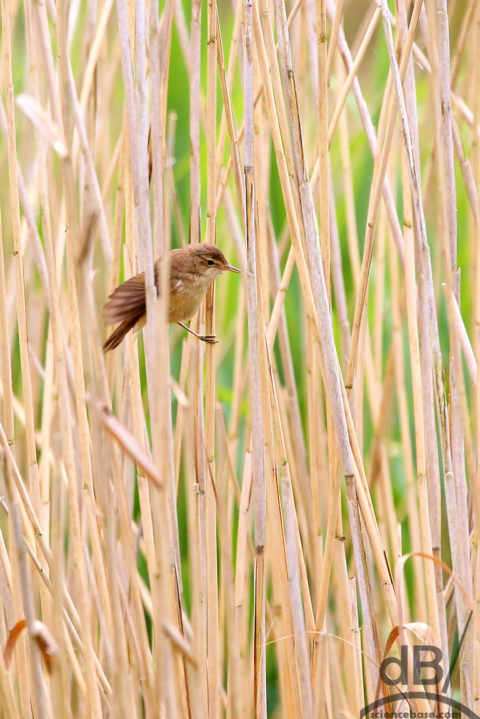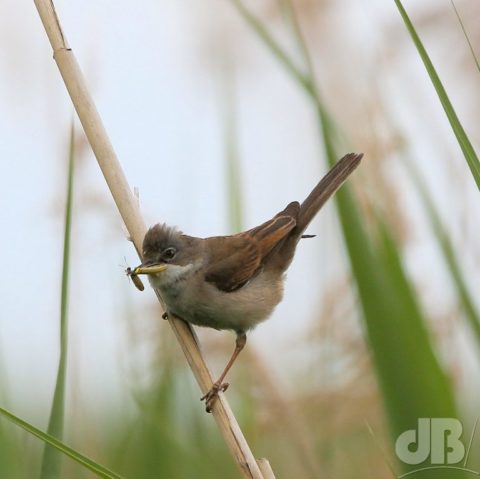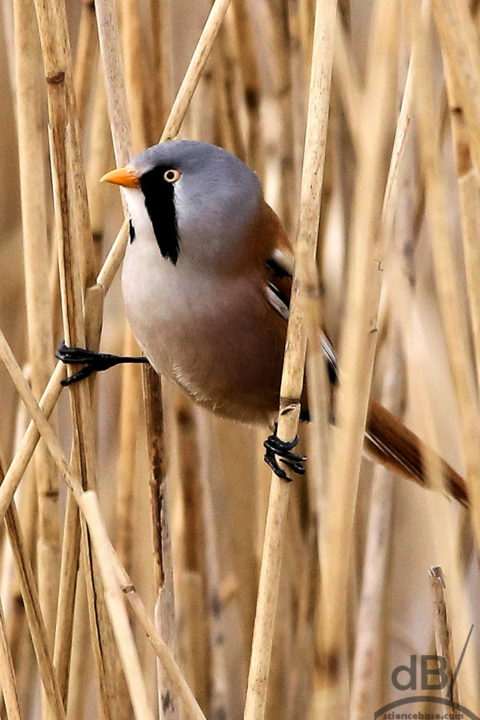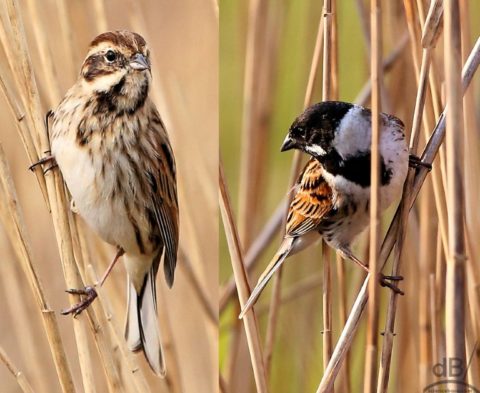If you walk the places I walk you will have passed noisy reed beds a lot recently. There are many birds that like to breed, nest, eat and play among the reeds. But, many of them are quite shy and don’t often show well.

Have a listen to the “song” of the Reed Warbler here:

The Whitethroat has quite a raucous call too, not dissimilar to the Reed Warbler, have a listen:
Also very distinctive is the Bearded Reedling (Panurus biarmicus, formerly known as the Bearded Tit) but these are more prone to hiding away especially once they’re nesting. But if you hear a scattering of “pew-pew-pew” sounds among the reeds watch out for this unique species. Nearest place to my patch I know of where you might see Beardies is the Reedbed Trail at RSPB Ouse Fen, NT Wicken Fen also has a few. Bigger showings at RSPB Titchwell and RSPB Minsmere.

The pinging/pewing call of the Bearded Reedling
More likely to be out and about are the Reed Buntings, Emberiza schoeniclus, which birders like to call Reed Bunts, always with the abbreviating. A casual glance at a male Reed Bunt in summer plumage might put you in mind of a more elegant House Sparrow, but any more than a casual glance and you will realise it is quite different. The female is striking too, but the contrasts in her patterning of lower intensity than those of the males. Reed Bunts will perch on those reeds but also hang out in bushes and shrubs near the water or flee to adjacent fields if disturbed.

And, here’s how the Reed Bunt sounds:
A famous one though is the Yellowhammer, whose wheezy call is “two slices of bread but not cheeeeese”
The Bittern sounds like someone blowing across a large bottle
The Beardies mentioned above sound like lots of little springs pinging, or to my ear cheap sci-fi laser guns being fired in a playground game, peww, pewww, pewww…
Goldfinch are very chatty and tweety in the treetops and flying over sort of sound like coins jangling in a pocket, as do Redpolls.
Linnets call “linnet linnet” as they fly over.
If it sounds like a Blackbird but repeats itself and is melodic it’s a Song Thrush, if it’s a more aggressive sounding Song Thrush, it’ll be a Mistle Thrush.
Chiff Chaff does what it says on the tin. Metronomic, tweet, twit, tweet, twit…or more to the point chiff chaff chiff chaff…etc
If it sounds like an asymmetric chiff chaff it’s probably a Great Tit.
Long-tailed Tits sound chirpy and busy, often calling tee-teet-tee in little triplets of notes.
Robin is a quiet blackbird playing a trilly woodwind
Blackcap is like an abbreviated smoother sounding but also ad libbing Blackbird
Wrens tick, tick, tick from the hedgerow but sing very loudly and melodically as does the Dunnock but to a different tune. Robin alarm calling is also a sharp tick sound, like a marble being tapped against a ball bearing.